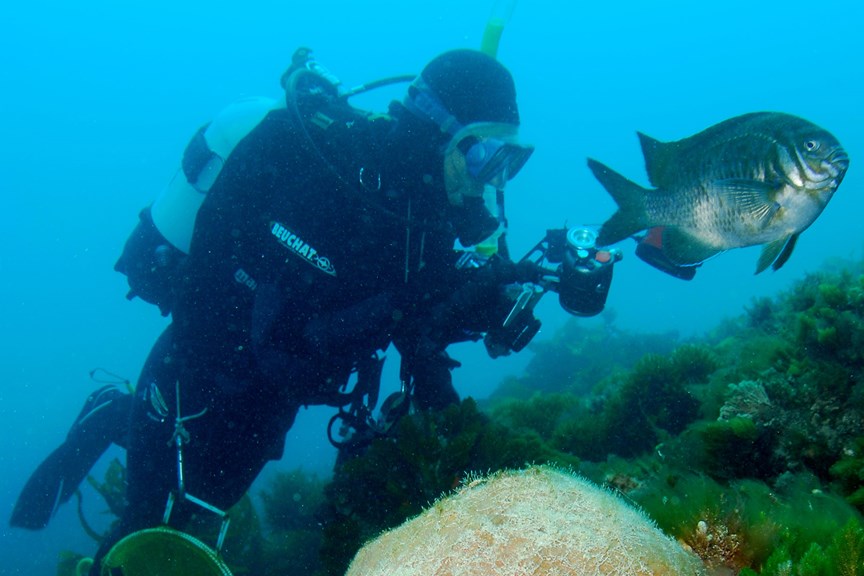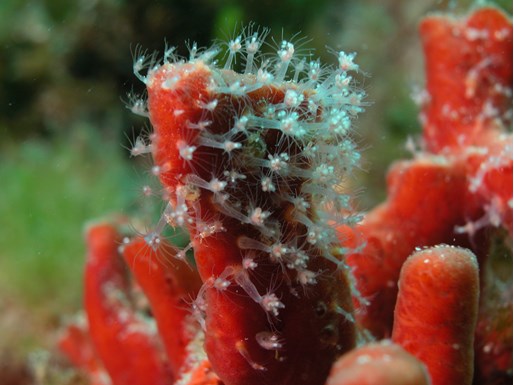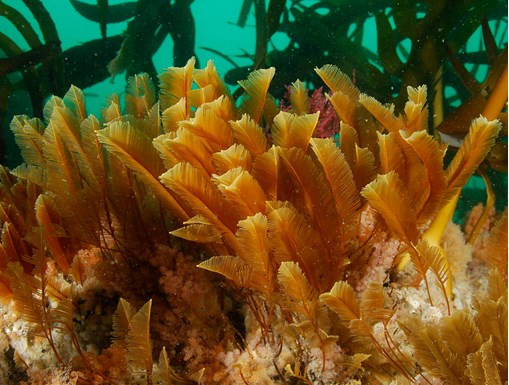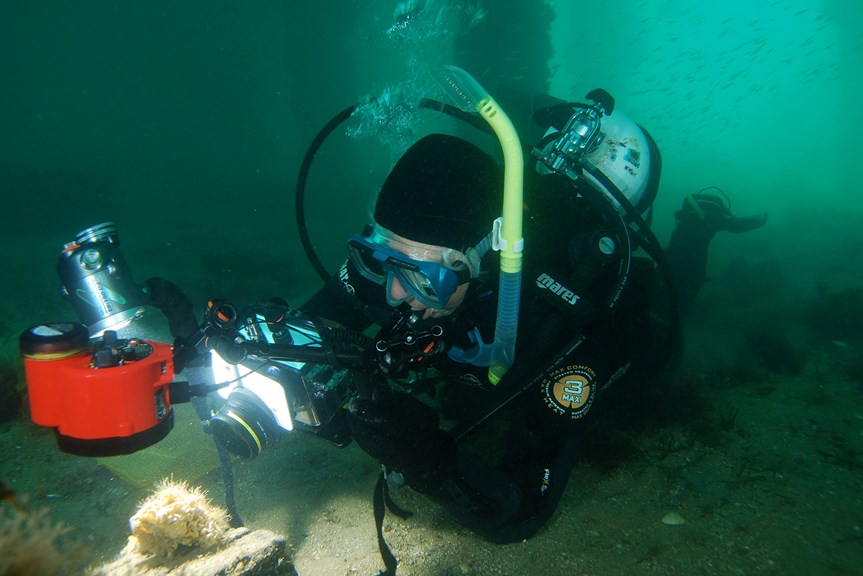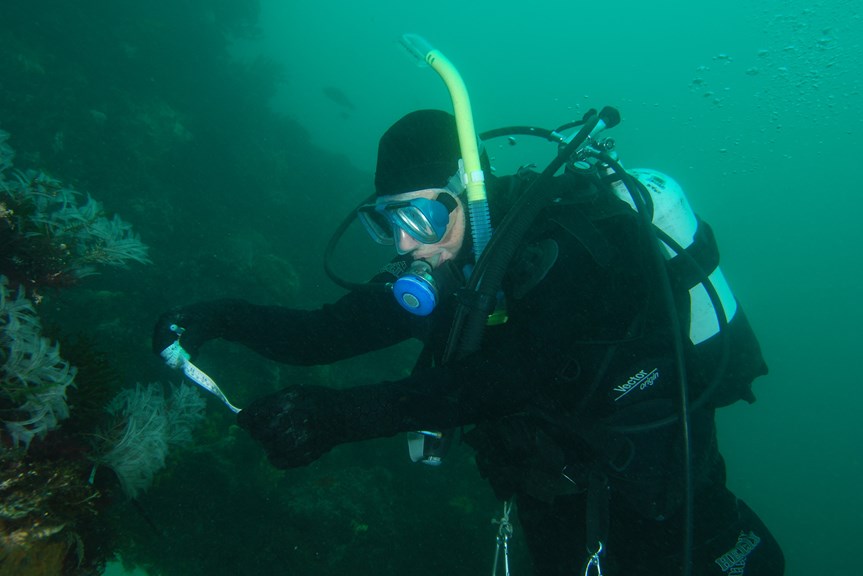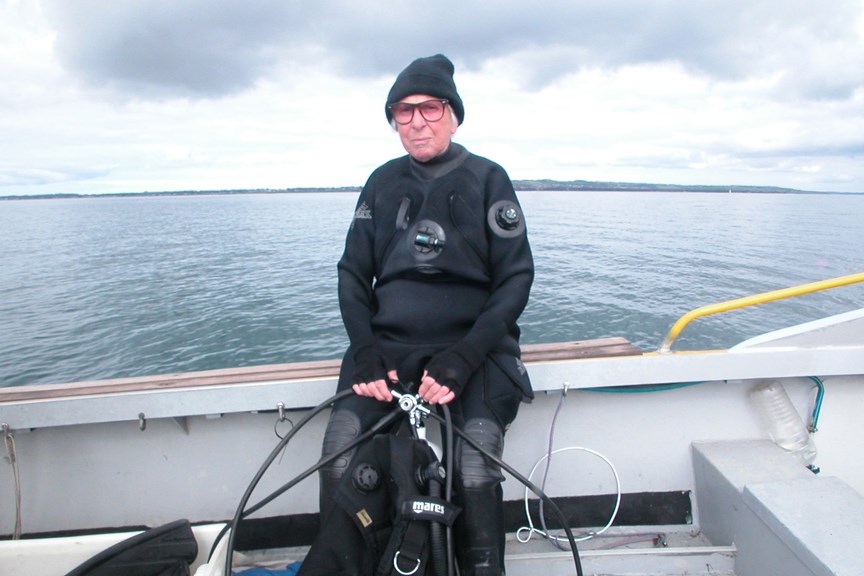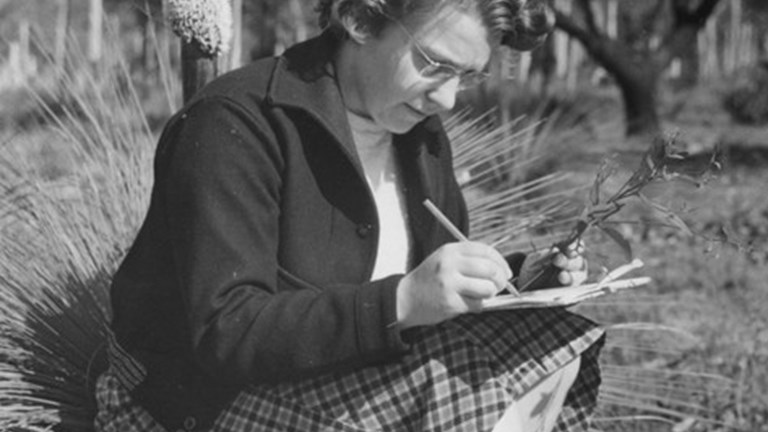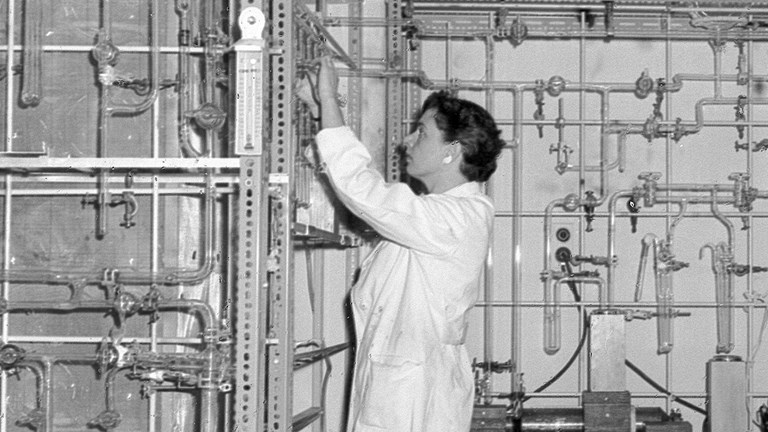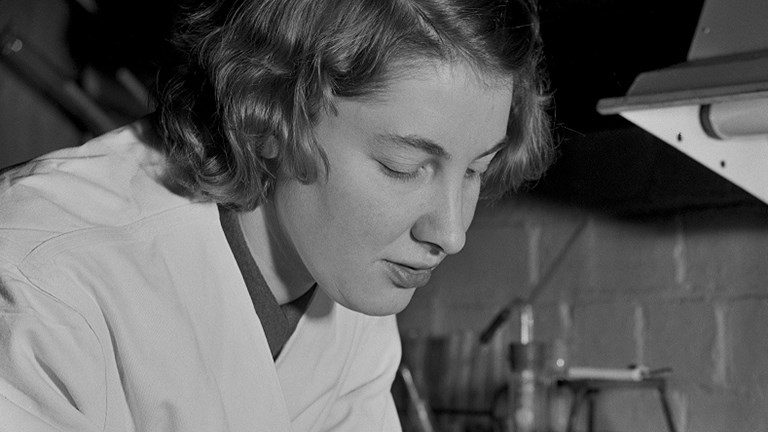Jan Watson: diving into the unknown
One of Australia’s first scientific divers, Dr Jan Watson used her tenacity, skill, and passion to realise her underwater ambitions.
Unearthing the stories of pioneering women from the Museums Victoria Archives.
Dr Jeanette (Jan) Watson, AM, surprised many people—especially when she pulled up on her motorbike wearing a leather jacket, even in her 80s.
A maverick in every sense of the word, Jan began her scientific studies against her mother’s wishes.
While her mother wanted her to become a nurse, Jan’s father handed over the 15 shillings (about $55 today) to cover her first term fees and told her, ‘Don’t fail’.
She enrolled at the School of Mines & Industries Ballarat (SMB) but, as a woman, Jan was told she could not enrol in her preferred course of geology.
As she put it, ‘Until then no female had ever dared enrol at SMB so in the first year there was a lot of sexist opposition to be overcome’.
‘But I persisted and finally [the principal] reluctantly enrolled me in Applied Chemistry, the course with the most geological subjects and the only one he considered available to a mere female.’Jan Watson
The senior male students made her life difficult in that first year but Jan found some creative ways of holding her own—including unleashing a gas that smelled like rotten eggs.
After graduating Jan was employed as a metallurgical chemist at a local foundry but lost her job when she married fellow SMB graduate Alf Watson in 1949.
‘Professional married women were not acceptable in conservative Ballarat,’ she wrote.
Jan and her husband moved to Melbourne in 1951, where she became the first student at the newly created school of geology at Melbourne Technical College (now RMIT).
But jobs for female geologists were few and far between.
‘She had to forge her own path because all the women around her were not being given the opportunities,’ says Melanie Mackenzie, a collection manager of marine invertebrates at Museums Victoria.
After a stint at the Mary Kathleen uranium mine, in northwestern Queensland, Jan returned to Melbourne in 1960 where she took up a position teaching senior science at Penleigh Ladies’ College.
She was a teacher for 10 years but in between that and raising a family, Jan also managed to find time to dip a toe into the water of what would become her lifelong obsession.
‘She and her friends taught themselves to dive at the Melbourne University swimming pool, learning from books and practising until they got it right,’ says Melanie.
When diving in the ocean they quickly realised Jeanette was too long a name to yell out over the water, so from then on she was Jan.
It was a dive at Pope’s Eye, in Port Phillip Bay, that Jan first encountered hydroids—a group of colourful marine invertebrates related to jellies and coral that, at first glance, often don’t appear to be animals.
‘With museum people you tend to be influenced by chance events and the things that you first become interested in—your first love as it were in an academic field—it stays with you all your life,’ says Dr Robin Wilson, Museums Victoria’s senior curator of marine invertebrates and another colleague of Jan’s.
‘In her case it was certainly true, and she really made the most of it.’
She was hooked, and over the next few years shifted her professional focus away from chemistry and geology to marine biology and completed a masters at the Victorian Institute of College (VIC).
In another first for Jan, she wrote: ‘This was the first VIC masters degree awarded’.
Jan published her first scientific paper in 1969, and soon after became an Honorary Associate at the National Museum of Victoria (now Museums Victoria)—an association that would last more than 50 years.
‘Jan was also one of the first marine biologists in southern Australia to take up scuba diving and underwater photography to extend and document her scientific interests,’ says Robin.
In this emerging field Jan also started providing environmental consultancy services to governments and industry, including studies of marine life in Bass Strait.
Jan’s business, Marine Science and Ecology, was one of the first environmental consultancy firms in Australia.
‘She already had the expertise in chemistry and geology, so that then led to her being able to use her expertise for all these reports for the mining companies and government,’ says Melanie.
‘No one else had that mixture of skills—plus it just gave her an excuse to dive.’
And dive she did, all over the world, ‘To fascinating places that I would never have visited as a recreational diver,’ said Jan.
In between her consulting work Jan was a taxonomist, working to identify and describe new species.
Such was her standing that on a trip to a scientific conference in Japan she was invited to spend an afternoon with Emperor Hirohito (a fellow hydroid taxonomist) exploring the palace’s marine collection.
‘She was staying at a youth hostel,’ says Melanie, ‘And the concierge asked her “How are you going to be spending your day Mrs Watson?” and she said, “I’m off to see the emperor”.
‘He just laughed, and then the emperor’s limousine pulled up.
‘When she was dropped back, the guy was in shock!’
Jan also participated in several marine research voyages as a representative of the museum, including a particularly memorable one aboard the research ship Dmitri Mendeleev at the invitation of the Moscow Institute of Oceanology.
She spent weeks at sea as the crew sampled at depths of up to 6600m, but she encountered some resistance from her hosts when they got to Lord Howe Island.
‘Having brought my diving gear along, and fully intending to dive at the island stopovers, I was rather taken aback by the extraordinary fear the Russians have for SCUBA diving—rather like the public traumas when diving was in its infancy in Australia,’ she recounted for the museum’s staff newsletter in 1976.
‘After much argument I managed to get my gear ashore at Lord Howe, accompanied by two assistants detailed to stand on the shore to rescue me when I surely would get into trouble.
‘Luckily I quickly located a Sydney diver in residence, gave my assistants the slip and thereafter spent a profitable day among the coral and fishes.’
Despite the tension over Jan’s love of diving, she remembered the experience fondly.
‘With quite unexpected generosity, I was given, on behalf of NMV, the entire contents of several deep trawls and parts of others, as well as the entire hydroid collection from that voyage.’
Diving was always at the centre of her life but Jan had to employ some creative thinking to continue into her 80s.
‘She'd go into the pharmacy and get bags full of KY jelly and the pharmacist would just look at this little old lady going, “What the hell is happening?”,’ laughs Melanie.
‘It was basically so she could put a wet suit on, because she found it harder to put on as she got older.
‘It’s the same as when she rode her motorbike…she’d pull up on this big black bike with her leathers on and then take her helmet off in a big reveal.
‘I think she enjoyed the shock factor a little bit…just wanting to buck the system and not fall into the tropes of what it is to be a married woman with grandkids.’
In her half century as a marine biologist Jan published some 50 scientific papers but, while impressive, that figure doesn’t tell the full story of her contribution to the field.
‘Before Jan Watson, Hydrozoa were poorly known in Australian waters and documenting species diversity in this group has been her passion and mission,’ explains Robin.
‘159 recognised genera and species of marine hydrozoans have been described by Jan Watson and this is her exceptional scientific contribution.’
To put that figure in perspective, it is about one fifth of all known Hydrozoans in Australia.
More than this, Melanie says the battles Jan fought and won have made it easier for Australian women to be accepted in science.
‘All of those points along the way it seems like people tried to block her and at every step of the way she pushed through,’ says Melanie.
‘She worked more than twice as hard as everyone around her so that she could be an expert and so that no one could talk down to her.
‘She did it tough but her being there inspired other people to know that they could do it too.’

